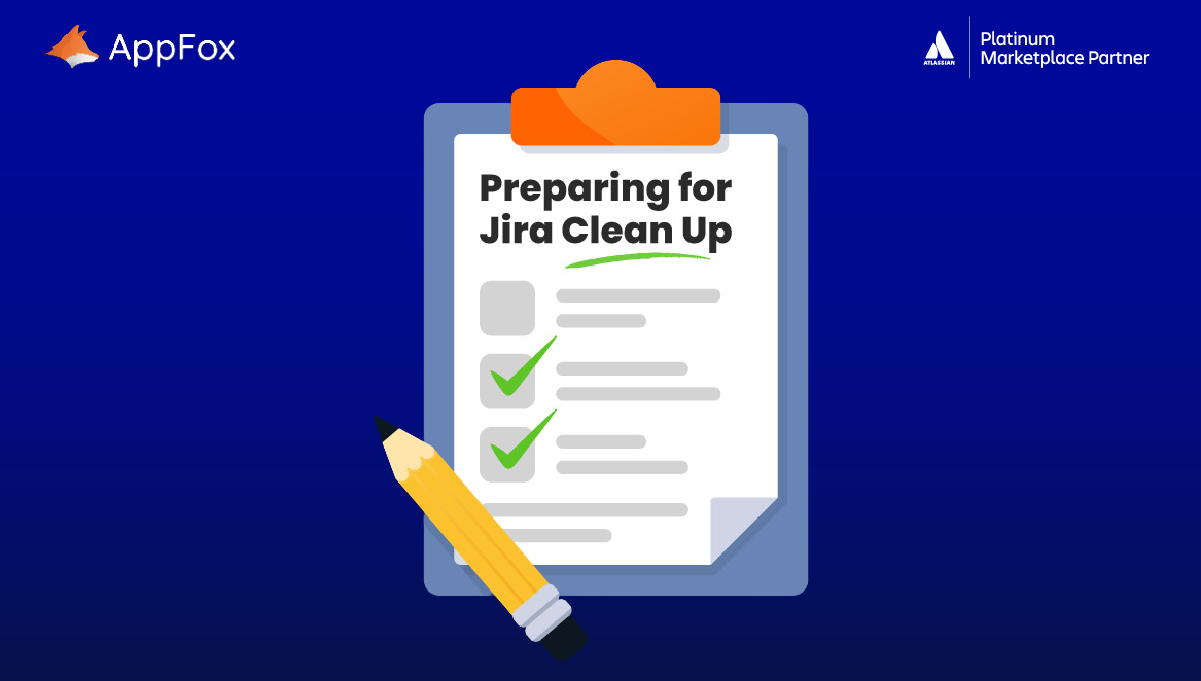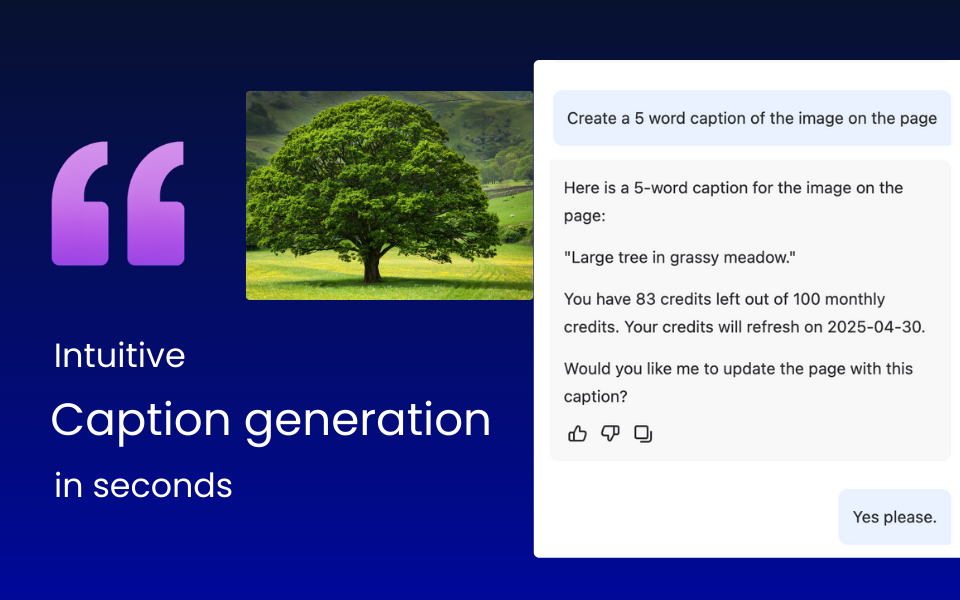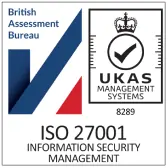Usually there’s only a small team of Admins – or even just one of you! – and you’re responsible for ensuring that Jira works properly for your entire organization. That’s no mean feat when your Jira instance is a hive of activity: Projects, issues, users, tasks, workflows, fields, stories, and more.
(If you’re not a Jira Admin, why not send this article to them to read. They may thank you for it!)
Here at AppFox, we love Jira. But although it’s an incredible project management tool, it can quickly become unmanageable if it’s not regularly maintained.
The solution? A Jira clean-up. This is our first post in a series dedicated to helping you prepare for, undertake and maintain your Jira clean-up routines.
So, today we’re going to cover:
- What is a Jira clean-up
- Why is a Jira clean-up important?
- How to prepare for your Jira clean-up
- Tools that can help you maintain Jira hygiene
We want this article to be valuable to you, and so we have included a lot of tips and tricks throughout based on years of experience.
Here we go!
What is a Jira clean-up?
Now, the chances are you’re an experienced Jira Admin and, as such, already know what a Jira clean-up is. But as we want this to be the ultimate guide to help you prepare effectively for your clean-up, we’re going to start by covering some of the basics.
(If you’re already an experienced clean-up champion, feel free to skip the basics and head straight to the next section!)
A clean-up is a process designed to bring improved order and efficiency to your Jira instance. When projects, issues and fields spiral out of control, it can be harder to find the objects you need to complete your work.
Clean-ups offer an opportunity to identify key areas for improvement, remove items that are no longer required, and make changes to maintain the overall health of your instance. This could include archiving old projects, reviewing custom fields, and removing inactive users.
Essentially, you’re giving your Jira instance a big old spring clean. On that note, If this is your first Jira clean-up for some time (or – gulp – ever), then the chances are this will be a fairly significant undertaking for you and your team. That’s why preparation is so key here.
How often should I carry out Jira clean-ups?
Once your inaugural clean-up is done, we’d recommend following this routine going forward
- Monthly ‘basic’ cleans
- Quarterly reviews
- Annual ‘advanced’ clean-up
If you’ve been regularly maintaining your Jira instance in this manner, then this annual advanced clean-up shouldn’t be too brutal. There are also tools available to help you stay on top of your Jira hygiene, which we’ll focus in this section.
For now, we’re going to move on to why Jira clean-ups are so important.
Why is a Jira clean-up important?
Well-maintained systems are efficient systems. In terms of Jira, we’re talking:
- Clear structures
- A modest selection of custom-fields
- Consistent naming and terminology
- Only active projects, configuration, and users are available
It sounds simple in principle, doesn’t it? But we know that when you’re using a platform daily, and working quickly, trying to meet deadlines and constantly looking forward, it can be challenging to pause and take the time to keep your Jira site clean and in the best condition possible.
We frequently see small companies experience organic growth over time. This can result in a messy Jira instance if robust governance processes are not in place. Larger organizations, meanwhile, often struggle with the sheer volume of data and customization, which can become difficult to untangle.
So, a Jira clean-up is valuable because it provides a moment for you to pause and take a step back. You can view your instance from a distance and see the items which need to be reviewed, improved and changed.
Performance is another key reason why Jira clean-ups are important, particularly if you’re using Jira Data Center. If your Jira is overspilling with custom-fields, it will take longer for the system to parse through them all. This, in turn, can significantly impact the speed at which Jira can return search requests, update issues and so on.
And then, of course, there’s the impact of a well-maintained Jira instance on your users. A cluttered or ill-governed instance can really hinder your users’ productivity and ease of use.
We explore more reasons why Jira clean ups are important in this post here.
What benefits should you see from a Jira clean-up?
When you do this, and once order is restored to your Jira, we’re fairly certain you and your team should then notice these benefits:
- Improved performance
- A fresh slate for new customizations
- Better search results
- Enhanced reporting (better data = better output)
- Increased usability, leading to more efficient teams and greater productivity
- A better work environment, leading to happier users
- Fewer performance issues
- Easier to identify, investigate and resolve problems
- Heightened control and governance
- Reduced risk of human error in a messy environment
- Sustainable levels of cleanliness and order
Don’t your shoulders simply feel lighter already, imagining the soothing structure of a cleaned-up (yes, we think that’s a word) Jira?
Well, let’s crack on with the real insights of this piece. What steps should you take to prepare for a successful Jira clean-up?
How to prepare for a Jira clean-up
Yep, we’re going to say it: ‘Fail to prepare and you prepare to fail’.
It’s an old adage but it’s truly relevant in this instance. When tackling a Jira clean-up, especially your first one, it’s essential to lay some initial groundwork. Jira is likely to be a mission-critical tool within your organization, so your approach to the clean-up needs to be carefully considered.
Below are the following processes you should undertake in preparation for your clean-up.
Audit your instance to identify quick wins
Spend time looking through your instance to compile a list of empty or unused custom fields, forgotten workflows, duplicates and old projects. From this list, you may be able to identify some low-hanging fruit: quick clean up tasks you can undertake (such as removing inactive users) without disrupting users’ daily work. This may also help to demonstrate the value of a Jira clean-up to your wider team, and to encourage buy-in for the process as a whole.
Unsure where to start with your Jira instance audit? We’ve got just the thing for you. Download your Jira System Analysis template, to help you quickly and easily complete an audit of your Jira. This interactive template will guide you through common items within your instance and ensure you don’t miss anything off your clean up list! Take your first steps to improve the performance of your Jira and download your audit template today.
Decide which areas you are going to focus on
Once you’ve completed your Jira audit – and potentially zipped through some preliminary tasks as mentioned above – it’s time to map out your clean-up in more detail. Most commonly, we see Admins focus on the following areas:
- Reviewing custom fields
- Removing inactive workflows
- Identifying and managing duplicates
- Archiving past projects
- Archiving old issues
If there are several of you operating as Jira Admins in the team, it’s worth assigning roles and responsibilities ahead of the clean-up, so you can each allocate enough time and resource to focus on it. (We know how busy you are, and that you’re likely juggling several balls at once as Admins!)
Create a backup of your Jira instance
When making any form of significant change, it’s always a good idea to play it safe. A back-up not only protects your Jira from errors, deletions or downright destruction; it’s also a safe place to explore and test new configurations and processes. Atlassian shares some practical guidance here for backing-up your Jira.
If you’re using Jira Cloud, we’d recommend a tool like this one here from Rewind. It provides daily, automated back-ups for your Cloud instance, protecting everything from your projects and workflows, to boards and sprints.
Refer back to your organization’s policies and procedures
Your company should already have clear guidelines and requirements around data retention and protection, for example. It’s crucial that you’re aware of these before archiving or deleting information during your clean-up.
More generally, you should also make sure you have clear processes and definitions around your Jira instance. What, for example, is your criteria for granting permissions? Do you have guidelines for whether to keep or delete a custom field? And have you considered what to do if users leave your organization? The chances are you won’t want to entirely delete old users, but instead de-activate them so you can retain their data for audit purposes.
If you can implement a standardized approach where possible, and communicate this to key parties, it will make decisions during your clean-up easier to tackle.
Introduce a change request process
If your Jira instance has grown organically (and a little chaotically perhaps?), the ideal time to implement a change management process is ahead of your clean-up. You could consider doing this using Jira Service Management, Pro-forma, or a standard Jira Issue Collector.
The crucial part is to ensure this process is well-documented, so that users are confident how to request changes after your clean-up, and your instance is not subject to unauthorized or maverick changes.
Review the number of Jira Admins
Ideally, you want to minimize the number of users who can make changes to production. Again, this helps to mitigate the risk of spiralling changes. If you review your Jira Admins ahead of your clean-up, it will make ongoing maintenance and controls easier to handle once you’re all sorted.
It also means you can make sure you scale your Admins in line with the size of your instance, to ensure both are appropriate. We asked our teammates at Automation Consultants for their guidance around this:
“As a general rule, you want to keep your number of Admins as low as is feasible. Each organization is, of course, going to be different, but three is often a good starting point for coverage. We’d always recommend a ‘less is more’ approach for a smoothly run instance.
More than a fixed number, the key thing is to have good processes in place. Give your Admins the power to guide your solution, and to choose what (or what not) to implement. And ensure all your Admins are suitably qualified. It’s important to avoid the trap of letting anybody who asks to be a Jira Admin when they want to make changes to their project. This tends to spiral very quickly and you can end up in a real mess, quite quickly.”
Atlassian Consultant, Automation Consultants
In terms of qualifications, your organization may require all Jira Admins to achieve the Jira Governance and Housekeeping badge, or to be ACP-120 certified.
Create a roadmap for your clean up
We briefly touched on this earlier. Plan your clean-up priorities and assign a timeline. Keep in mind wider team or business activities that could impact workload, resource and focus. We’ll be writing about timelines for Jira clean-ups soon, so keep your eyes peeled for that piece.
Determine your end goal
What is your vision for Jira going forward? It’s important to visualize how you would like your Jira to operate after your clean-up. Keeping this in mind is important for two reasons. One, it ensures you’re all working towards a shared goal and helps to focus your clean-up efforts. And two, on days where the process feels never-ending, you can use your visualization of your fresh, clean and ordered Jira to spur you on!
Your Jira clean-up doesn’t have to be a drain on your time or resources. Benefit from the expertise and passion of a dedicated Atlassian Consultant by your side. Why not talk to us today, and find out how we can support and guide you through your Jira clean up process.
Identify your Jira champions
We’ll be exploring stakeholder engagement in more depth in future posts, so today we’ll just focus on one point. In the run-up to your Jira clean-up, it’s sensible to begin working out who could be your clean-up allies.
Ideally you’re looking for a selection of users who’ll promote the benefits of your clean-up across your organization. Even more vitally, these folks are the ones who’ll advocate for any new processes or measures that are a result of the clean-up. From new criteria for custom fields, to updated guidance around change management, you may need some champions to help engage and encourage wider users to accept these improvements.
So, here’s your eight-step plan to help you prepare for your Jira clean-up. But what if you could make life even easier with a dedicated app for Jira Admins? Read on, friend.
A tool to help you maintain order and structure
We feel the pain of busy Jira Admins; we really do. When you’re faced with cleaning up a cluttered, disorganized, and poorly governed ‘Wild West’ of a Jira, it can feel pretty daunting.
We’ve been there ourselves. In fact, it was when we were conducting our own Jira clean-ups that we started thinking there had to be a better way of doing it. So what did we do? We built an app!
Introducing Optimizer for Jira. Designed specifically with Jira Admins in mind, and available to download from the Atlassian Marketplace, its job is to make it easier for you to keep on top of your Jira instance.
Introducing Optimizer for Jira
With Optimizer for Jira (developed by us here at AppFox!), you can analyze, edit, and enhance your Jira instance at the touch of a button. Available on the Atlassian Marketplace, and designed for Cloud and Data Center, Optimizer equips you with the tools you need to:
- View the health of your Jira site
- Have visibility across all your configurations
- Analyze your projects, custom fields and configurations
- Identify areas for improvement
- Make bulk updates
- View relations and dependencies between objects
- Manage users
Let’s take a closer look at some of those features.
Get a bird’s eye view of your Jira instance
Instead of searching through different screens or running complex scripts, Optimizer enables you to view all your configurations in one place.
This can be valuable ahead of a clean-up, as it helps you visualize exactly what data your Jira holds. You are then better informed and can make a more cohesive plan to tackle the process. Optimizer is also an essential companion when it comes to maintaining order after your clean-up. You’ll be able to see at a glance whether configurations or other components are piling up. Crucially, you’ll also be able to take action.
Quickly identify problem areas
Optimizer for Jira includes a health check function, which can quickly locate areas for improvement. This, coupled with smart tables and filters, means you can gain essential insights into the usage (and therefore value) of objects and configurations within your instance.
This kind of knowledge is invaluable when it comes to planning your clean-up – and for maintaining an ordered instance afterwards.
Make changes at scale with bulk actions
Talking of taking action: Imagine a world where you, a Jira Admin, could confidently delete inactive users or edit custom fields in a mere moment.
You know where we’re going with this, don’t you? Optimizer for Jira enables you to instantly assign bulk actions, as opposed to manually locating and deleting objects from within your instance. This should make your clean-up significantly faster, and your ongoing maintenance a whole lot easier.
Dependency analysis helps to prevent breaking changes – meaning you can manage your instance with greater confidence
Note: Some of these features will only be available on Optimizer Data Center/Server
Do these features sound like they’d make your role as a Jira Admin easier? And would Jira clean-ups become a little less dreaded if you could use them to maintain a clean and ordered instance? If the answer is yes, we’ve got good news for you. Optmizer for Jira is available for you to try – for free! – on the Atlassian Marketplace today. Available for both Cloud and Data Center, go get it!
In closing
It might be fair to say that Jira clean-ups are never going to be enjoyable. But with the right preparation (and perhaps with an expert Consultant by your side, or an award-winning app like Optimizer in your arsenal), you can implement a more manageable and effective process.
If you do feel like you and your team would benefit from more targeted support and advice, it could be time to explore working with a dedicated team of Atlassian Consultants. Our team over at Automation Consultants are Atlassian Platinum Solution Partners, and bring with them years of experience (and enthusiasm) around the entire Atlassian ecosystem.
In the meantime, we’ll be back soon with the next piece in this series – all around the role of identification in your Jira clean-up. Make sure to check back soon, or subscribe to our updates so you never miss out.








